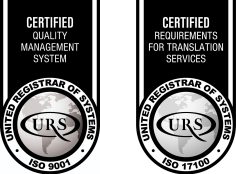Software localisation


WHAT IS LOCALISATION?
Localisation is the process of adapting a product such as software, marketing texts, websites, audiovisual materials, or literature that has already been translated into another language to certain countries or regions. This process takes into account the cultural values, needs, and expectations of the target market.WHY IS LOCALISATION IMPORTANT?
Localisation is a broader process than translation and involves a thorough knowledge of the target market and culture. Recognising the differences and choosing the right words is key to ensuring the effectiveness of the translated message. Avoiding the use of images or phrases that may be disturbing or even offensive to the target group is also important. Not paying attention to these details could mean losing a potential market.SOLUTIONS FOR MULTILINGUAL SOFTWARE
When your business is to deliver software applications to international markets quickly and efficiently, adequate translation, adaptation and functionality testing of the code strings, user interfaces and help documentation is key. Net-Translations brings the essential expertise into the equation. To deliver the best possible results, our managers strive to create a working relationship with clients that is as friendly and professional as possible so that not only the translations or measurement, graphic design, and video parameters meet their requirements, but that the adaptation to the target culture also respects their requests, without losing view of the end user’s context.
